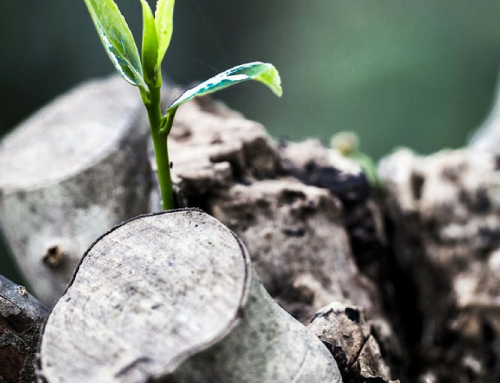 This spring, we’re dedicating our blog to the idea of consuming less, a good way to explore how much is enough for today. That doesn’t mean that you need to give up everything you own and go live in a tree (though that’s great if you do, and many of us feel like we’d love to do that about once a day!). This month, however, we’re dedicating our time to giving you ideas on how you can consume less in reasonable ways in things that you do every day. Today’s topic? How to consume less in the digital world. (Be sure to scroll to the bottom for our handy infographic).
This spring, we’re dedicating our blog to the idea of consuming less, a good way to explore how much is enough for today. That doesn’t mean that you need to give up everything you own and go live in a tree (though that’s great if you do, and many of us feel like we’d love to do that about once a day!). This month, however, we’re dedicating our time to giving you ideas on how you can consume less in reasonable ways in things that you do every day. Today’s topic? How to consume less in the digital world. (Be sure to scroll to the bottom for our handy infographic).
It may seem like the time you spend “living in the digital world” doesn’t leave a carbon footprint, but that’s not true at all. The manufacturing of electronics and the fossil fuels required to create the energy to use them take a toll on the planet. In addition to learning to consume fewer resources while existing in the digital realm, you may also learn a little bit about how to tune out the information overload. Trust us, when you tune out some of the digital noise, you’ll find that you gain a sense of peace and satisfaction. To get you started, here are our favorite lucky number seven tips for learning to consume less … digitally.
Tip Number One: Say No to the Upgrade
Whether it’s an e-reader, a smart phone or a laptop, sometimes you need the upgrade and sometimes you don’t. When you really start to do the research, you’ll start to realize that the harm people do by purchasing every upgrade that comes along is exponential, not incremental. The chemical processes, the raw materials, the waste produced and the output of the simple commutes to and running of factories full of workers all leave a stamp on the planet. Trust us, that stamp is a big one. This isn’t to say that some upgrades don’t warrant being purchased. Sometimes, it’s just time for you to have a better, bigger or faster piece of electronics. But that time is not every time that an upgrade is released. Let go of your addiction to upgrades! Learn to live with functional electronics instead of always needing what’s newest.
Tip Number Two: Recycle What You Don’t Use
We can’t emphasize enough how important it is to recycle your electronics when you’re done with them. It’s true that recycling electronics can be more leg work than just throwing your cans and bottles into your blue recycling bin, but it’s worth it. When you simply throw electronics away, they are often “scavenged” and then sent to developing countries where impoverished adults and children are exposed to deadly chemicals as they disassemble them to resell the parts. In the process, significant chemical waste is created. A simple web search can tell you if you have a local outlet for electronics recycling or if the manufacturer of your product accepts recycling returns. In the case of smart phones, you can live clean and do good by donating them to Hope Phones.
Tip Number Three: Things Don’t Always Need to Be Turned On
Are you not using your laptop? Is your television on but you’re in the other room? If you’re not using the tools of your digital life then do yourself and the rest of the planet a favor and turn them off! We promise you that you will not miss anything in the time that your digital devices are gone to the world. All of your messages, status updates and posts will still be there when you return. If you tend to plug a number of your electronics into one area of the house, invest in a $15 power strip. This will allow you to turn all of them off with just one switch. Sometimes, the best solution is simply to get used to the off switch!
Tip Number Four: Set Time Limits
Learning to click the off switch is true when it comes to your brain as much as it is for your actual electronic appliances. Your desk isn’t the only place with clutter! Clutter can be inside of your head, too. Set time limits for using your electronics and digital tools each day. Having three hours where you’re committed to not using your laptop, tablets, smart phone, television, Wii or Playstation or any other networked device will not only give you the opportunity to turn those devices off but it will also give you an opportunity to relax your brain (or work it out in other ways).
Tip Number Five: Solar Chargers
It may mean a bit out of your wallet initially, but buying a solar charger for your smart phone or tablet can save the planet resources and save you money in the long run. As an added bonus, you’ll be able to charge your devices anywhere and anytime. Solar chargers are a great way to start using more renewable energy if you don’t have the resources or availability to take a larger plunge and install solar panels (or other alternative energy forms) on your home.
Tip Number Six: Don’t Leave Chargers Plugged In
One of the most common ways that our digital lives have become wasteful is the habit of leaving charger cables for phones, tablets, laptops and other mobile technology constantly plugged in. Even if you are not actively charging your device, the charging cable is drawing small amounts of energy from the outlet that, over time, add up in the amount of resources that have been used to generate them. Pull the plug out of the socket when you’re done! It will only take you a few moments to plug it back in the next time that you need to charge your device. It’s worth the extra seconds of time when you add up the long term impact.
Tip Number Seven: Keep a Digital Activity Log (Not Digitally!)
We would be willing to bet that if you truly realized how much of your time and energy was going to maintaining your “digital life,” you’d be surprised. Part of learning to consume less “digital space” is to get a handle on exactly how big your digital consumption is. Take a month to (gasp) write in a paper journal and log how many minutes (really hours!) you spend per day on digital activities. When you’re done, not only will you be inspired to reduce your digital time, you’ll also have a roadmap for where the best places to cut usage and time are.
Have another idea on how to consume less in your digital life? You tell us. Comment below or tell us about it on Facebook, Twitter, Pinterest or Instagram.





